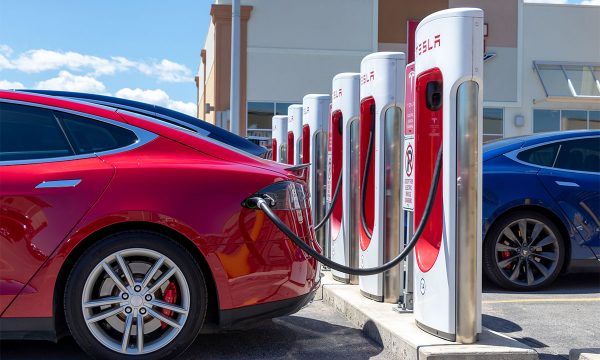The changing customer experience and OEM incentives are changing the way dealerships pay their sales teams

On many fronts, we all know that our business is not what it used to be.
Online sales activities result in declining showroom traffic and this has changed the role of dealership sales people and dealership staff.
Our customers are expecting a different experience. With customer attendance in our showrooms in a freefall, dealers are thinking of ways to increase traffic or take maximum advantage of the traffic that does walk through the doors or visit their website.
Currently all the discussion seems to be about the future of auto retailing. The question that many dealers are asking is how will automobiles be sold or accessed in the future and will our showroom sales experience remain relevant well into the future?
What will our new and used vehicle departments look like as fewer and fewer customer use our in-store channel to secure their vehicle in future years?
How will we motivate employees and retain them in the future? What type of employee will we need in the future?
At this stage in the game, unfortunately there are many more questions than answers.
For the retail side of our businesses, many traditional compensation models just don’t cut it any longer.
Many dealers are carefully examining this as variable compensation costs continue to eat up more of their variable gross profit.
I acknowledge that this is partly due to how dealerships account for various factory incentives, however, overall many traditional compensation models are more expensive today than they once were.
In theory, compensation, and in particular incentive compensation is designed to entice employees towards a certain type of behaviour.
These compensation schemes by their nature reward employees for positive behaviours and quickly identify those employees with sub-par behaviours.
In practice, dealers constantly tinker with pay plans to try and work the game results in their favour. They increase target milestones and introduce caps and other disincentives which can sometimes demotivate employees and lead to increased employee turnover.
Incentive compensation benefits might initially entice the employee to reach a certain performance level. Once that level is achieved, however, the effectiveness of the enticement stops in the minds of many employees and in fact they believe it becomes part of their forward compensation base.
To keep the enticement aspect of incentive compensation, pay plans must change or stay fresh.
To keep the enticement aspect of incentive compensation, pay plans must change or stay fresh.
In a changing business environment, one with declining sales opportunities and declining individual dealer input into consumers’ retail automotive choice, keeping employees motivated requires a whole new way of thinking.
Believe it or not, it all starts with how dealers are now compensated.
On the retail side of the business, in years past, dealers were compensated based on the results of our direct involvement with their customers.
Dealers purchased goods and services from their OEM and other suppliers, prepared vehicles for sale and conducted a sales negotiation and eventually delivered the vehicle.
They were paid entirely by the customer and profit was determined by their ability to sell and hold margin.
It only seemed logical that employee variable compensation was based on their ability to generate profitable sales activity.
In today’s virtual world, dealers have less and less influence on the customer’s purchase decision.
In fact, for some brands, the brand itself has more influence on the customer than we do.
Dealers still have a key role to play but it is greatly diminished from what it once was.
Dealers are paid by a combination of brand incentives and the results of a grossly reduced sales interaction with customers.
In today’s world then, the approach to incentive compensation gets turned upside down.
Many of us still operate as though we need lots of commissioned sales personnel, however we have limited tools in our traditional tool kit to attract and retain good sales people.
This is in part because the new world we find ourselves in, might not lend itself to an incentive compensation model — at least not a traditional one.
I can see that retail operations business model more closely resembles the fixed operations business model — earning smaller individual transaction profits from a larger pool of customer transactions.
For all intents and purposes today, many of the brands we represent control how much profit dealers can make.
Dealers now fall under a pay for performance model of their own where a dealer’s entrepreneurial skills and instincts are less important to the bottom line than a more important deep understanding of factory incentive criteria.
This leads to an entirely different employee variable compensation model; a model based on attaining brand incentive criteria.
This leads to more of a team incentive than an individual one, and likely consists of some combination of base compensation plus a share of the brand incentive pot.
The critical element that I see here is one of a team concept rather than an individual one. Brand incentives seem to be multifaceted for some brands and the trend seems to be growing.
For the dealership to earn to incentive compensation dollars, it must perform across all departments and yield certain desired results.
For the dealership to earn to incentive compensation dollars, it must perform across all departments and yield certain desired results. No longer can one star person solely influence the outcome, but rather the outcome is influenced by the performance of the entire team.
To complicate matters further, auto retailing will look and feel differently depending on the geography where the dealership is located. This is largely because the competitive environment will be different depending on their location.
For instance, a branded dealership in downtown Toronto will not only compete with other vehicle brands and the traditional aftermarket, it will also compete directly with the same brand it represents in nearby communities.
The OEMs could also soon have “direct to consumer” retail offerings such as car sharing, non-vehicle mobility service offerings, direct vehicle purchase, subscription etc.
The customer relationship with the OEM has always been a kind of passive, information exchange, but now the shift, for some brands at least, is to transact or at least connect directly with the consumer.
For individual dealers, local market capability will dictate whether you stay traditional, go no commission, offer some combination of commission or profit sharing, single individual sale process management or the traditional 10 step approach.
In short, each individual dealer will create his or her own hybrid approach based on the performance expectation of individual employees.
For dealer groups, the challenge becomes more onerous.
Many dealer groups operate in different communities. Some of these same groups try to standardize process, procedures and policies within their group and also within same brand dealerships owned by the group.
Groups with both metro market stores and non-metro market stores will find that perhaps they might have several hybrid approaches to compensation rather than one consistent approach across their enterprise.
This will add to human resource management complexity, such as dealership promotions and transfers and other key HR initiatives.
For the foreseeable future, dealerships will need human resource capacity to satisfy customers, meet OEM primary market area specific performance expectation and satisfy dealer profitability.
What our employees do and how they perform will still be as important as ever.
How we calculate the reward for their effort will determine if we motivate or discourage our teams.
In a model where changing incentives paid to dealers by brands are such a critical element of annual profitability, delivering a consistent employment experience to our employees will present ongoing challenges for many, and provide new opportunities to drive growth and profitability.












